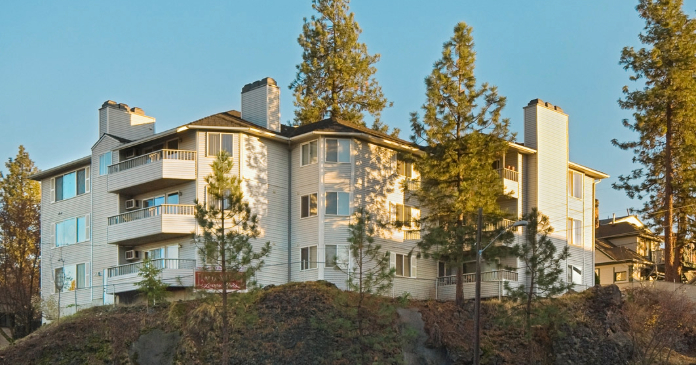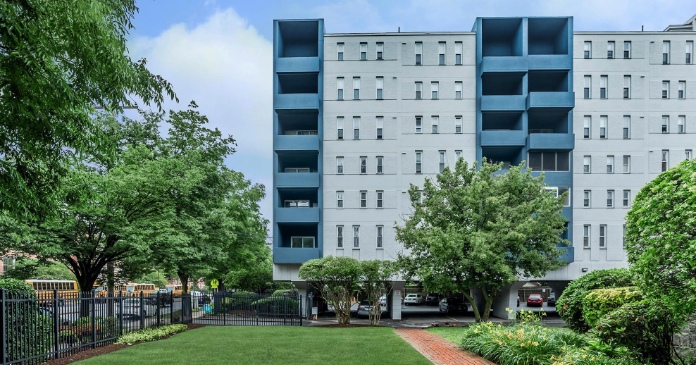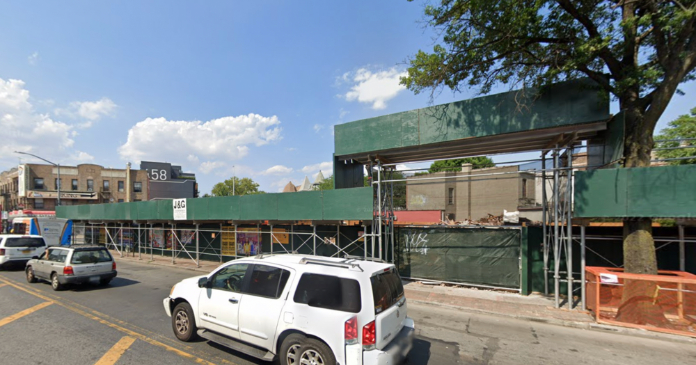There is expected demand for an additional 4.5 million new apartments in the U.S. by 2030, according to data from the Workforce Housing Committee of the National Multifamily Housing Council, Washington.
What’s more, deal activity for the affordable housing sector of the apartment market is not declining to the same degree as the overall apartment market, said Jim Costello, senior vice president of New York-based real estate research firm Real Capital Analytics Inc. Subsidized housing—properties in which any portion of apartments is reserved for low-income residents—dipped 4 percent, compared to a 10 percent year-over-year decline for the overall apartment market as of June 30.
“We are seeing an increasing number of funds raising capital to pursue opportunities in this workforce housing space,” said Peter Rogers, Chicago-based senior investment consultant in the manager research group of general investment consultant Willis Towers Watson PLC.
“The term ‘workforce housing’ has become somewhat of an industry buzzword,” Rogers noted. Managers’ definition of workforce housing can include any apartment building catering to middle-income renters, with middle income defined as people who earn 60 percent to 150 percent of the area median income. By comparison, the Urban Land Institute defines workforce housing as housing for people who earn 60 percent to 120 percent of the area median income.
Renters are getting priced out of areas with high job growth, said Russ Minnick, president of Salt Lake City real estate manager Bridge Investment Group LLC. Minnick said an estimated 12 million households spend more than half of their annual income on housing in a sector that has declined 9 percent since 2000.
The idea is to create apartments for people who have been priced out of inner cities, which has been a popular destination for real estate investors. More real estate managers have discovered the sector in the past year to 18 months, industry executives say, a continuation of a trend in moving away from pricier downtown areas.
Joint venture
Among those investing in the sector, Allstate Corp. acquired more than 7,600 units of workforce apartments through a joint venture with Los Angeles-based real estate money manager TruAmerica Multifamily. The Northbrook, Ill., insurer has $2 billion in real estate equity and $4.5 billion invested in commercial mortgages.
The joint venture’s latest acquisition was a $90 million investment in an Escondido, Calif., apartment complex. Joint venture executives plan to remodel the complex to create workforce housing, said Robert E. Hart, founder, CEO and president of TruAmerica Multifamily, itself a joint venture between Hart and The Guardian Life Insurance Co. of America. TruAmerica has $5 billion in assets under management and $2 billion in property management assets and construction projects. TruAmerica and Allstate executives declined to disclose the size of their joint venture other than to say it has close to 70 properties in 10 different markets.
The joint venture is not tied to one deal but invests as opportunities arise, Hart explained. The joint venture primarily makes value-added investments in so-called class B real estate: older properties in less attractive locations with lower rental income.
Allstate executives consider workforce housing as a defensive play. “It goes to the chronic undersupply of affordable housing,” said Mike Moran, Allstate Investments, managing director and head of commercial real estate investments. “It offers a high degree of security on the downside” compared to other sectors such as retail or office.
Allstate’s workforce housing joint venture with TruAmerica fits within the strategy Allstate adopted after the 2008 financial crisis to invest directly in real estate through joint ventures, co-investments and separate accounts as a way of retaining a degree of control.
“We think that class B multifamily is almost recession-proof,” Hart said.
These properties are generally not leveraged, and investors tend not to syndicate the properties into synthetic instruments. Plus, occupancy tends to be constant, around 80 percent, Hart said.
Demand for workforce housing remains steady even in a financial crisis, he said. Renters might double up, but there is still more demand than supply for affordable apartments.
Allstate is not alone. In November 2016, the $197.1 billion New York State Common Retirement Fund, Albany, committed $710 million with New York-based Community Preservation Corp., a non-profit affordable housing and community revitalization finance company, to finance multifamily housing for low- and moderate-income state residents. The pension fund’s recent commitment is nearly quadruple its $200 million commitment with CPC in 2014.
As of March 31, New York State Common had $937.6 million committed to its affordable housing program with CPC, with $760.6 million of that invested in 18,745 apartments and 478 CPC mortgages to build or revitalize apartment buildings, said spokesman Matthew Sweeney.
Anchor investor
The $213.7 billion California State Teachers’ Retirement System, West Sacramento, is the anchor investor—with a $200 million commitment—to Belay Investment Group LLC’s Belay Partnership Ventures II, a fund of funds with a $500 million target.
In February, Belay acquired a 49 percent interest in a portfolio of five multifamily communities from real estate operator Eagle Property Capital Investments LLC and entered into a joint venture to acquire and fix up to $269 million more in multifamily properties. The joint venture plan aims to turn apartment buildings into workforce housing for middle-income renters, with a focus on the U.S. Hispanic population, a fast-growing demographic.
CalSTRS officials declined comment on the Belay investment, spokeswoman Michelle Mussuto said. CalSTRS, which does not have a specific allocation to workforce or affordable housing, had a $25 billion real estate portfolio as of March 31.
In August, LEM Capital LP closed its $300 million fourth fund, LEM Multifamily Senior Equity Fund IV, which is focused on class B value-added multifamily properties, including workforce housing. The $52.7 billion Pennsylvania Public School Employees’ Retirement System, Harrisburg, and the $4.8 billion Philadelphia Board of Pensions and Retirement are investors.
Jay J. Eisner, LEM co-founder and partner, said the Philadelphia-based firm focuses on 10- to 30-year-old properties that are being refreshed and offered as affordable and workforce housing. LEM has been investing in the sector since 2011.
Over the past year or so, an increasing amount of capital has been invested in the sector, making it more competitive. “The demand has been very strong and will continue to be strong,” Eisner said.
Baby boomers are selling homes and millennials are delaying purchases of their first homes because they are struggling with massive student loan debt, Eisner said.
Overall, people are living in apartments longer, and workforce housing is designed for individuals who can’t afford higher-priced newly built downtown apartments, Eisner said. Most workforce/affordable housing is in the inner ring of suburbs, typically 20-year-old apartments on the outskirts of cities such as Dallas, Houston and Atlanta and close to retail and schools, he said.
Investing in debt, too
Real estate investors are not only investing in equity in the workforce/affordable housing sector, but they also are investing in debt.
Many states and municipalities are providing support for affordable housing, spurring debt investment in these projects, said Jeffrey Sweeney, chairman and CEO of US Capital Partners Inc., a San Francisco private investment bank that makes direct debt investments, participates in debt facilities and arranges equity placements for small- to lower-middle-market companies.
California offers tax credits and bond guarantees to developers that include affordable housing in the mix. In September, US Capital Partners assisted San Francisco real estate firm New Cities Investment Partners LLC in its $110 million financing of a mixed-use real estate project, including affordable housing, in Hayward, Calif., which is 27 miles from San Francisco.
Author: Arleen Jacobius, Private Equity, Real Estate













